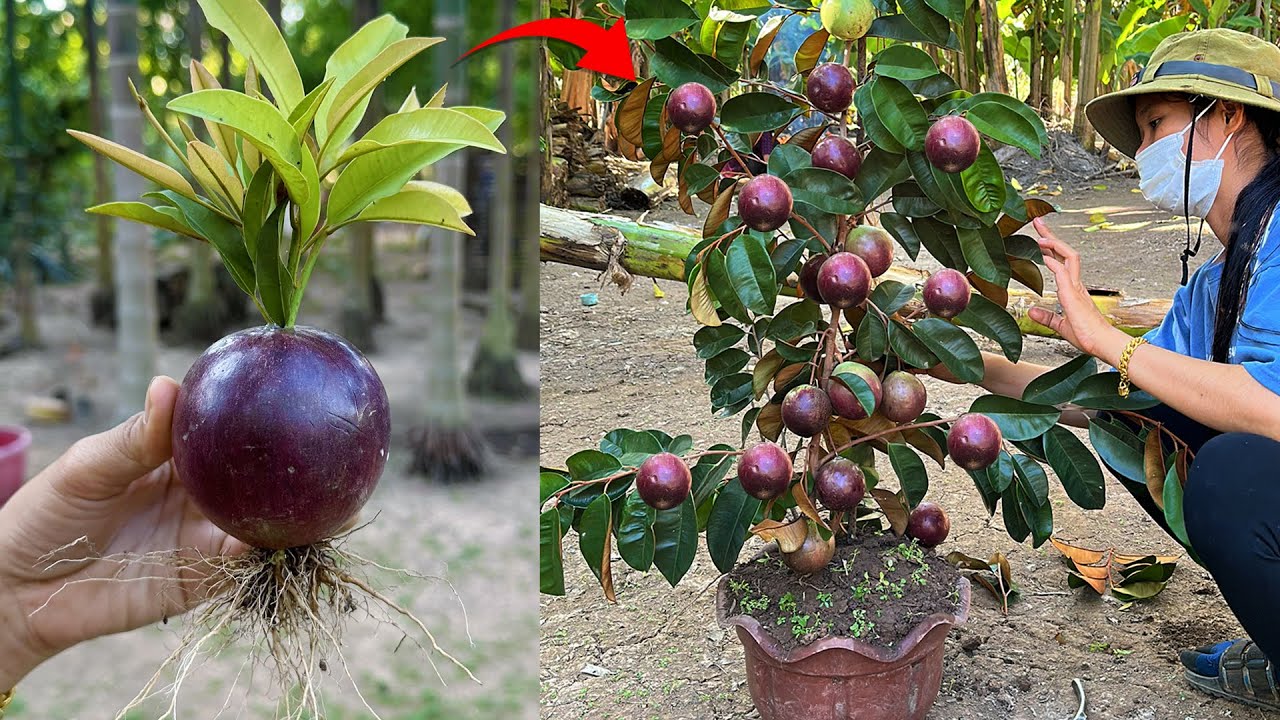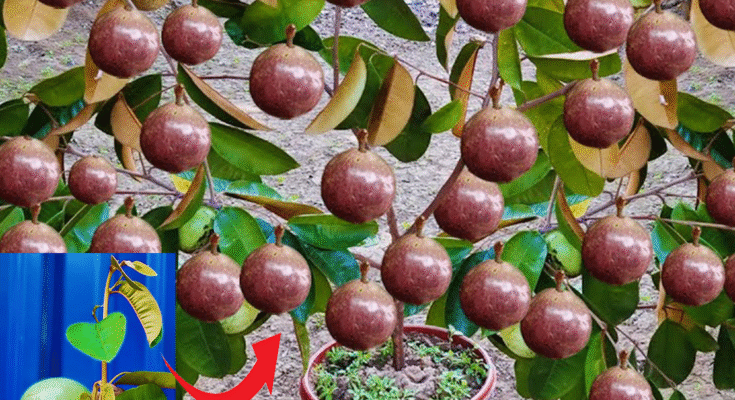Great Technique For Grafting Milk Fruit
Milk fruit, commonly known as star apple (Chrysophyllum cainito), is a tropical fruit tree prized for its sweet, milky flesh and glossy purple or green skin. Many home gardeners and orchard growers admire this fruit not only for its delicious taste but also for its ornamental beauty and shade-giving canopy. However, growing milk fruit from seeds often results in long waiting periods and unpredictable fruit quality. That’s why grafting is an excellent technique to ensure early fruiting, preserve desirable traits, and achieve a consistent harvest of high-quality fruit.
In this guide, we will explore a reliable and practical technique for grafting milk fruit, step by step, so you can apply it successfully in your own garden or orchard. Whether you are a backyard hobbyist or a serious farmer, mastering this technique will help you propagate healthy trees faster and more efficiently.
Why Graft Milk Fruit?
First, let’s understand why grafting is better than growing from seeds for milk fruit. When you plant milk fruit seeds, the resulting trees may take 7 to 10 years to produce fruit. Moreover, the fruit quality can vary because the seeds may not be true to the parent tree. By grafting, you clone a healthy, productive tree, preserving its best characteristics such as fruit sweetness, size, and disease resistance. Also, a grafted milk fruit tree usually starts bearing fruit in about 3 to 4 years, which is a huge advantage for growers.
Choosing the Right Rootstock and Scion
Grafting requires two main parts: the rootstock and the scion. The rootstock is the young seedling that provides the root system. It should be healthy, vigorous, and about the thickness of a pencil, usually 6–12 months old. The scion is a small branch taken from a mature, healthy tree that produces high-quality fruit. Make sure the scion wood is about the same diameter as the rootstock and has at least 2–3 buds.
The ideal time for grafting milk fruit is during the active growing season when the sap is flowing well. This is usually at the beginning of the rainy season or during warm months when the trees are not under stress. Avoid grafting during extreme heat or dry periods, as this may reduce the success rate.

Best Time for Grafting
A Great Technique: The Cleft Graft
One of the most reliable techniques for grafting milk fruit is the cleft graft. This method is simple, effective, and works well for beginners and experienced grafters alike.
Step-by-Step Grafting Method
- Prepare Your Tools:
Use clean, sharp tools such as a grafting knife, pruning shears, and grafting tape or plastic strips. Sterilize the knife with rubbing alcohol to prevent disease transmission. - Select and Cut the Rootstock:
Choose a strong, straight rootstock. Cut the stem about 12–18 inches above the soil with a clean, horizontal cut. Make a vertical split about 1–2 inches deep in the center of the cut stem using your knife. This split will hold the scion. - Prepare the Scion:
Select a healthy scion with visible buds. Cut the base of the scion into a wedge shape, about 1–1.5 inches long. The wedge should be smooth and even on both sides to ensure good contact with the rootstock. - Join the Scion and Rootstock:
Gently insert the wedge-shaped scion into the cleft of the rootstock. Make sure the cambium layers (the green layer just under the bark) of both scion and rootstock line up on at least one side. Good cambium contact is crucial for the graft to take. - Secure the Graft:
Wrap the graft tightly with grafting tape, budding tape, or a strip of plastic. Cover the entire cut area to hold the scion in place and prevent moisture loss. Some grafters also apply grafting wax to seal any exposed cuts. - Aftercare:
Place the grafted plant in a shaded, humid spot protected from strong wind and direct sunlight. Water the plant regularly but do not overwater. After 3–4 weeks, check the graft for signs of success: new leaf growth on the scion is a good indicator. Once the graft has taken, you can gradually remove the tape.
Tips for Success
- Always use fresh, disease-free scion wood.
- Keep your tools clean and sharp.
- Do not expose the graft to harsh sun or dry wind during healing.
- Remove any shoots or suckers that grow from the rootstock below the graft union, as these can divert nutrients from the scion.
- Be patient and gentle during the process—rushing or rough handling can damage the graft.
Conclusion
Grafting milk fruit using the cleft graft technique is a practical way to produce reliable, high-quality fruit much sooner than growing from seed. With care, patience, and a little practice, you can propagate your favorite milk fruit varieties and share them with friends, neighbors, or customers.
Mastering this technique not only helps you enjoy delicious, milky star apples but also preserves excellent varieties for future generations. So gather your tools, select your best scions, and try this great grafting method today. Happy growing and may your milk fruit trees reward you with sweet, abundant harvests for years to come!



